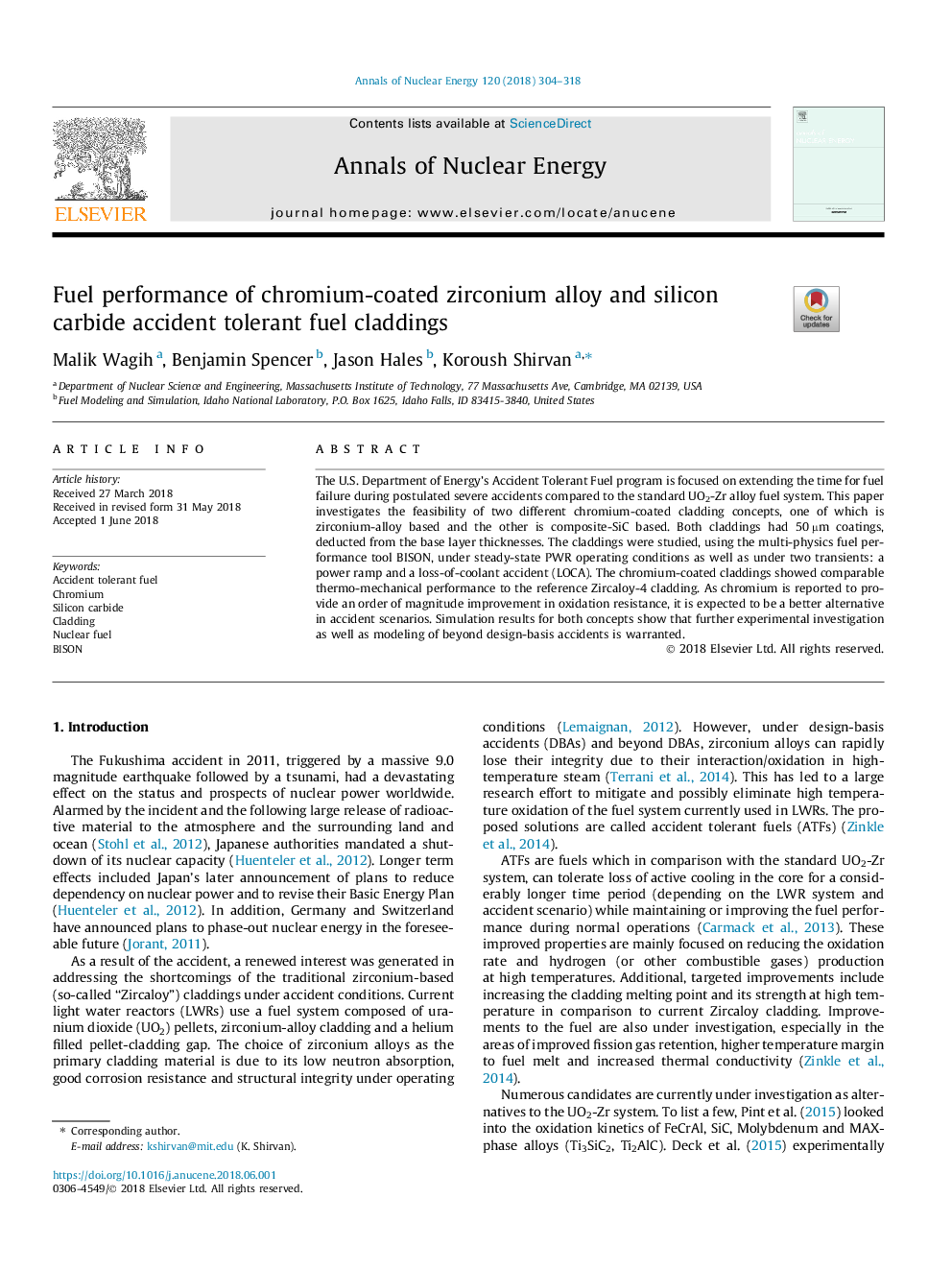| Article ID | Journal | Published Year | Pages | File Type |
|---|---|---|---|---|
| 8066844 | Annals of Nuclear Energy | 2018 | 15 Pages |
Abstract
The U.S. Department of Energy's Accident Tolerant Fuel program is focused on extending the time for fuel failure during postulated severe accidents compared to the standard UO2-Zr alloy fuel system. This paper investigates the feasibility of two different chromium-coated cladding concepts, one of which is zirconium-alloy based and the other is composite-SiC based. Both claddings had 50â¯Âµm coatings, deducted from the base layer thicknesses. The claddings were studied, using the multi-physics fuel performance tool BISON, under steady-state PWR operating conditions as well as under two transients: a power ramp and a loss-of-coolant accident (LOCA). The chromium-coated claddings showed comparable thermo-mechanical performance to the reference Zircaloy-4 cladding. As chromium is reported to provide an order of magnitude improvement in oxidation resistance, it is expected to be a better alternative in accident scenarios. Simulation results for both concepts show that further experimental investigation as well as modeling of beyond design-basis accidents is warranted.
Related Topics
Physical Sciences and Engineering
Energy
Energy Engineering and Power Technology
Authors
Malik Wagih, Benjamin Spencer, Jason Hales, Koroush Shirvan,
